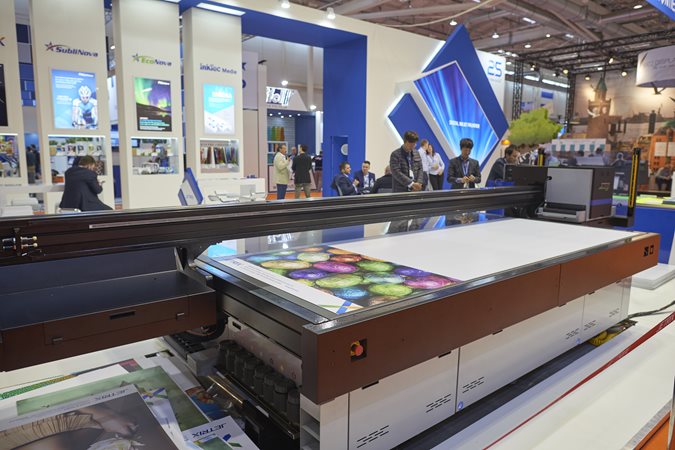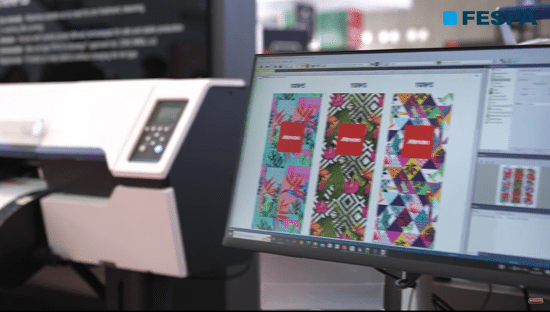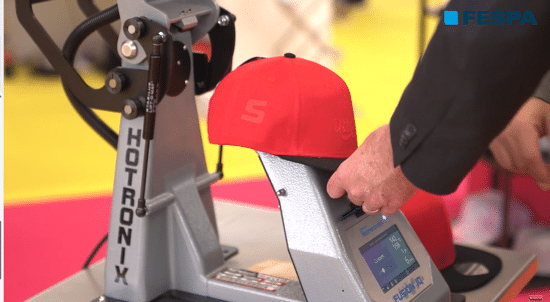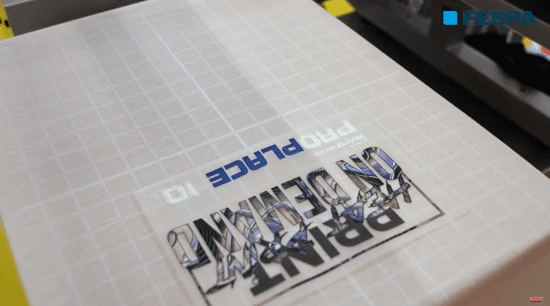Why LED curing is taking over the wide format space

One of the more obvious trends from this year’s FESPA Hamburg show was the widespread use of LED curing in wide format.
One of the major advantages of UV curable ink is that it dries instantly so that there's no need to wait for the inks to gas out, meaning the prints can be laminated and shipped straightaway.
UV-curable inks rely on a chemical reaction, known as photo polymerisation, in which the elements fuse together almost instantly, simultaneously bonding the graphic to the substrate and forming a tough finish that's resistant to rubbing and outdoor weathering.
This polymerisation is triggered by photo initiators within the ink, which produce free radicals when exposed to UV light. The major components of these inks are monomers and oligomers, which the free radicals cause to cross-link together to cure the ink.
The conventional approach has been to use mercury lamps located on the print carriage to provide this light source but many vendors are now turning to LEDs as an alternative light source.
A Light Emitting Diode is basically a semiconductor that produces light when connected to an electric current. In truth this is not a new technology though its adoption by the printing industry for UV curing is relatively recent.
Today LED curing is used in many different print processes, including offset and flexo presses as well as digital devices such as label printers and, of course, wide format. The power of the LEDs has improved dramatically in the last couple of years and this is leading to more vendors looking to use LED curing.
There has been an issue where the inks had to be very finely tuned to ensure that there was enough energy to trigger the photo initiators to cure the ink. Ben Woodruff, sales manager for Inktec Europe, explains: “It took us 50 different formulations to produce our LED ink."
"That's the main reason you see so many machines with mercury curing. It's because the ink is not widely available but being an ink manufacturer we had the luxury of being able to make our own ink.” That said, as more powerful LEDs become available so more ink manufacturers are looking at developing LED UV-curable inks.
There are a number of practical benefits, including a considerable saving on energy, which adds up to a much lower total cost of ownership. Reinhilde Alaert, product manager for Agfa’s Jeti range, estimates that an LED system will use 50 percent less energy than an equivalent mercury lamps, explaining: “With LED the lamps are only on when they are printing.”
Another advantage is that LEDs have much longer lifespans, since a semi-conductor is a solid material so they are not prone to wearing out. Most manufacturers will quote at least 10,000 hours, and many claim the LEDs will last for up to 20,000 hours.
Given that the lamps only need to be on for the actual printing, this effectively means that most users will not need to replace their LED lamps throughout the life of the printer. Alaert adds: “Also we have a more durable system because the lamp itself is simpler and doesn't require shutters or mirrors so there are less parts to replace.”
It’s also worth noting that since there’s no degradation of the lamps over time you get their full performance up until the point they fail, unlike a conventional lamp which has to be monitored and replaced as the performance tails off.
The printers will still need to be warmed up to their operating temperature, but the lamps themselves don’t need to be kept at temperature. As a result, most vendors report considerably shorter start up times, with no need to wait for the lamps to warm up again if the machine’s been sitting idle for a short spell.

Inktec launched this LX8i LED flatbed printer earlier this year.
Woodruff says that the lamps produce very little heat, adding: “The main advantage of LED is the range of substrates and the ability to print on plastics and things which are heat sensitive in multiple passes without having to worry about deformation of the substrate. So something like foamboard would rise up if you had too many passes.”
He says that this also helps to improve the overall productivity of the printer because there's less need to tape down the substrates to counter the effect of curling since there is less heat. This in turn reduces the risk of head crashes and subsequent damage to the expensive printheads.
All of this adds up to a more eco-friendly solution, with less energy consumption and potentially less waste. Alaert adds: “It's greener because you don't have mercury and you don't produce as much ozone.” This also means that there’s no need to worry about ventilation for ozone gas.
One further advantage is that the LED lamps are lighter, and since they’re usually located on the print shuttle close to the heads this means that there’s less weight in the overall print shuttle. This in turn reduces the level of vibration that the printer has to contend with, which allows for better image quality at higher speeds. An added benefit is that it’s cheaper to build a lighter system, which helps to keep down the overall cost of the printer.
Alaert says that the feedback from customers is extremely positive, adding that Agfa has not had to give up anything in terms of performance or image quality. She notes: “We said that we wouldn't take any step back in image quality because that was our unique selling point so I am very confident that the vividness of the colour is identical to what we had with mercury.”
There’s still a question mark over the use of LEDs for some of the fastest machines on the market, which rely on the fewest number of passes to keep their speed up. But given all the advantages of this approach we should see more vendors bringing out LED UV curable wide format printers as more powerful LEDs and a greater range of suitable inks become available.
Topics
Interested in joining our community?
Enquire today about joining your local FESPA Association or FESPA Direct
Recent news

What does Artificial Intelligence mean for the Design and Print Industry
Today, Artificial intelligence is already built into many products even though at times it is not noticeable. Looking towards the future, the growing presence of AI will change the design and printing industry forever. Sonja Angerer shares how you can successfully future-proof your business.

How to minimise water usage in textile printing with the Mimaki TRAPIS
We speak to Arjen Evertse, General Sales Manager EMEA and Marc Verbeem, Supervisor Product Management from Mimaki Europe about the Mimaki TRAPIS, an environmentally friendly, two-step, waterless textile transfer printing solution.

How to decorate hats with anything, anywhere including 3D embellishments
We speak to Andy Rogers, Marketing Director at Stahls' UK & Europe about decorating hats and specifically the 360 IQ hat press at FESPA Global Print Expo 2024 at the RAI in the Netherlands.

How to increase heat transfer efficiency with consistently accurate positioning
We speak to Andy Rogers, Marketing Director at Stahls' UK & Europe about the Pro Place IQ and the technology behind it. Andy shares how the Pro Place IQ projects the image on the screen, down onto the platen.